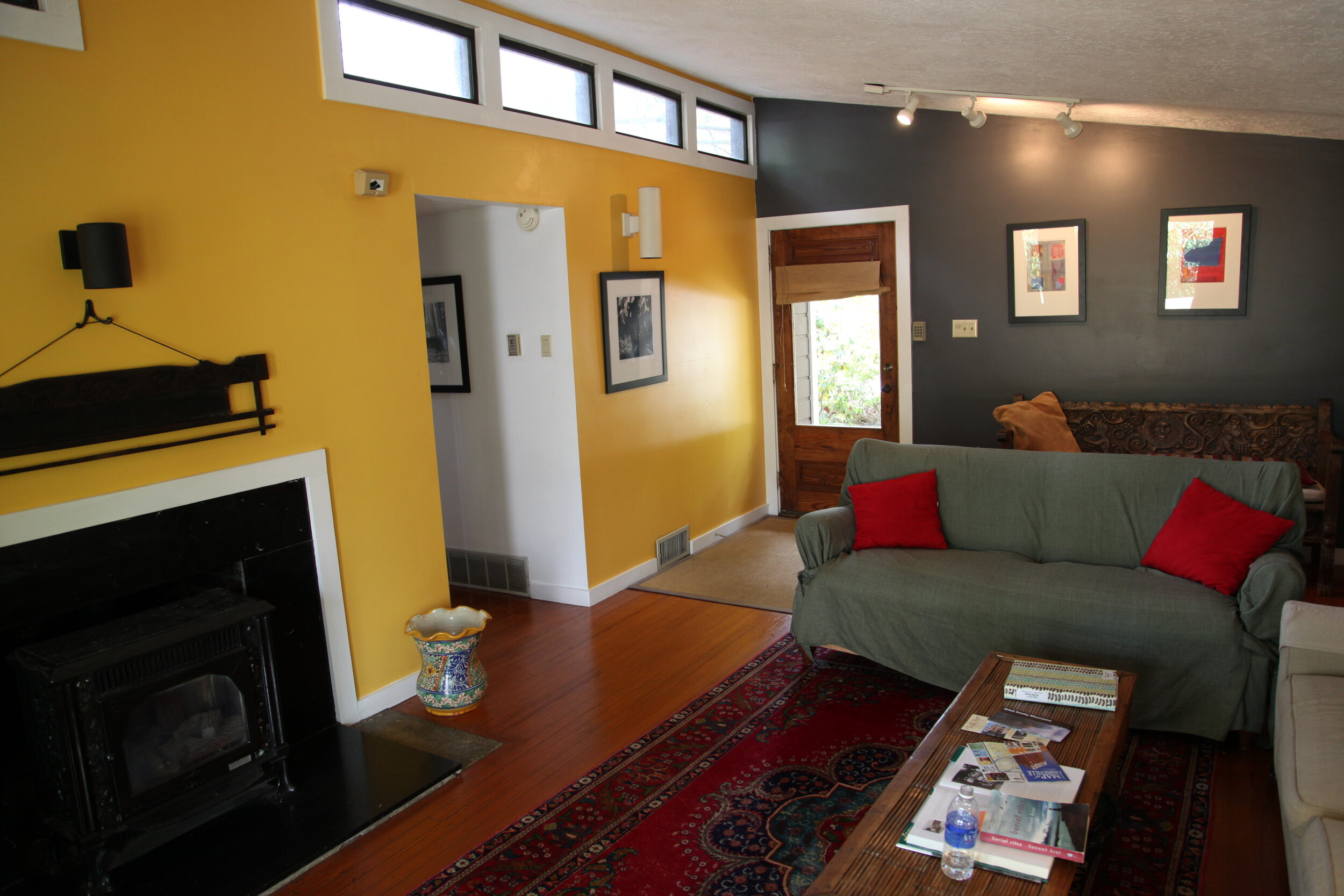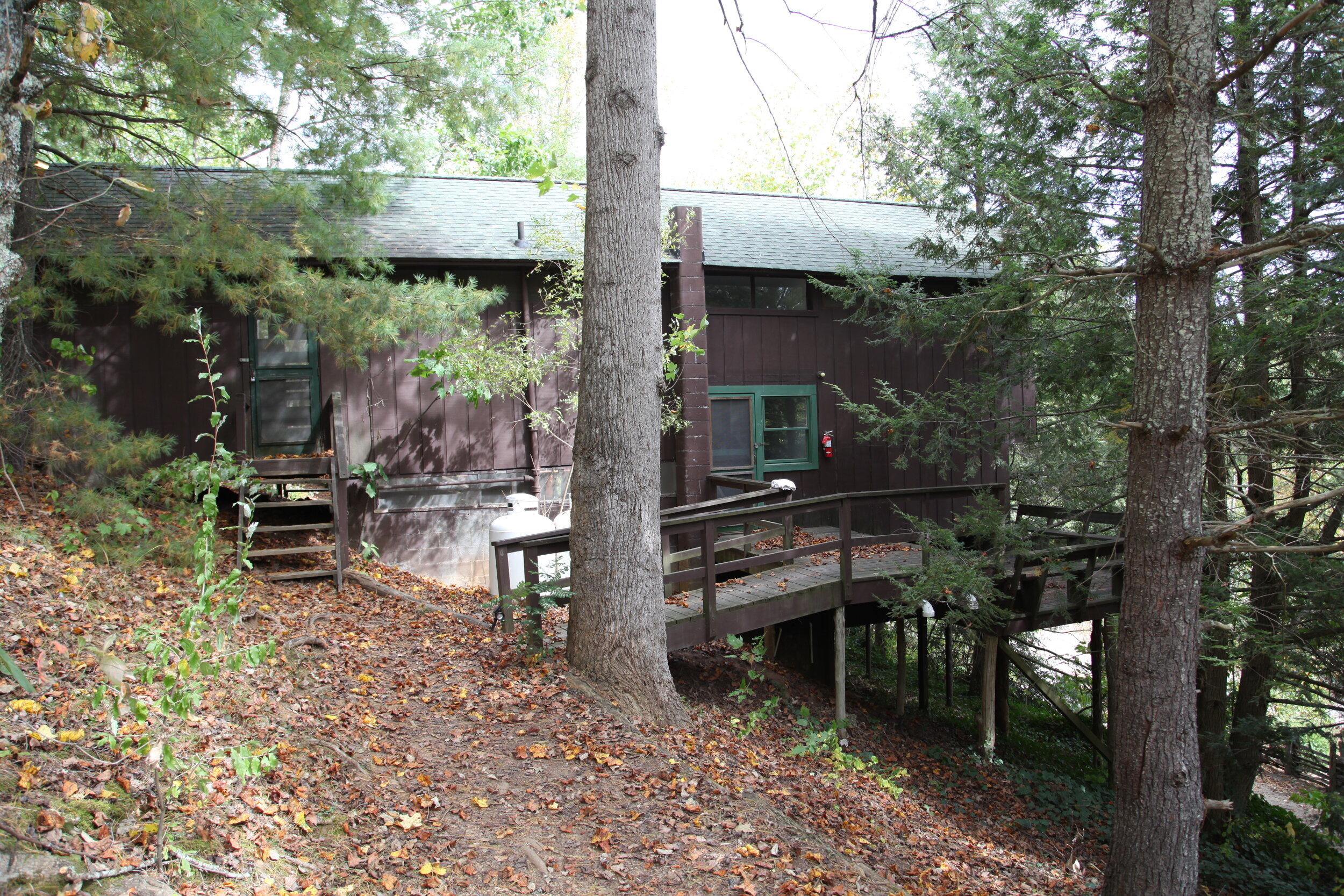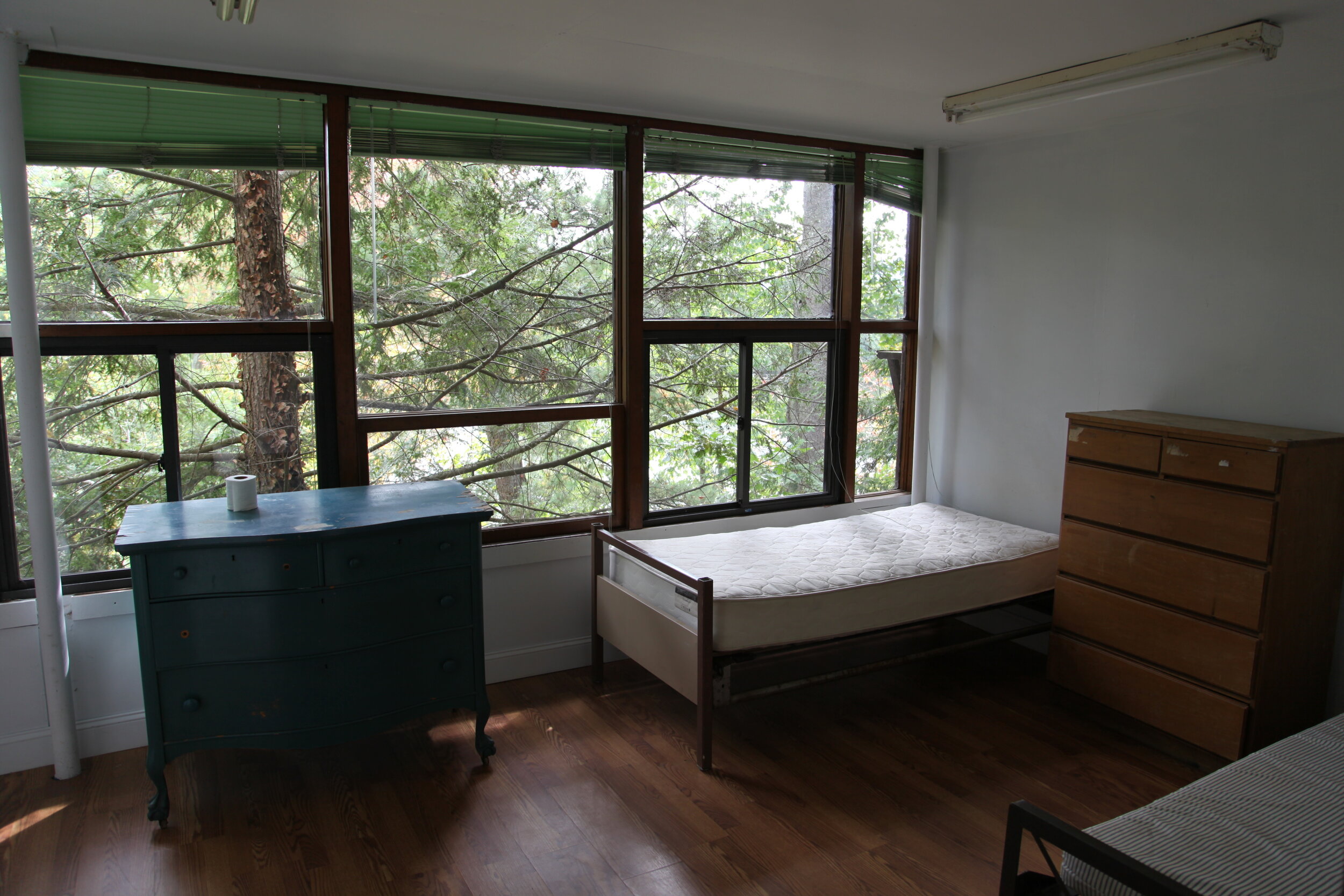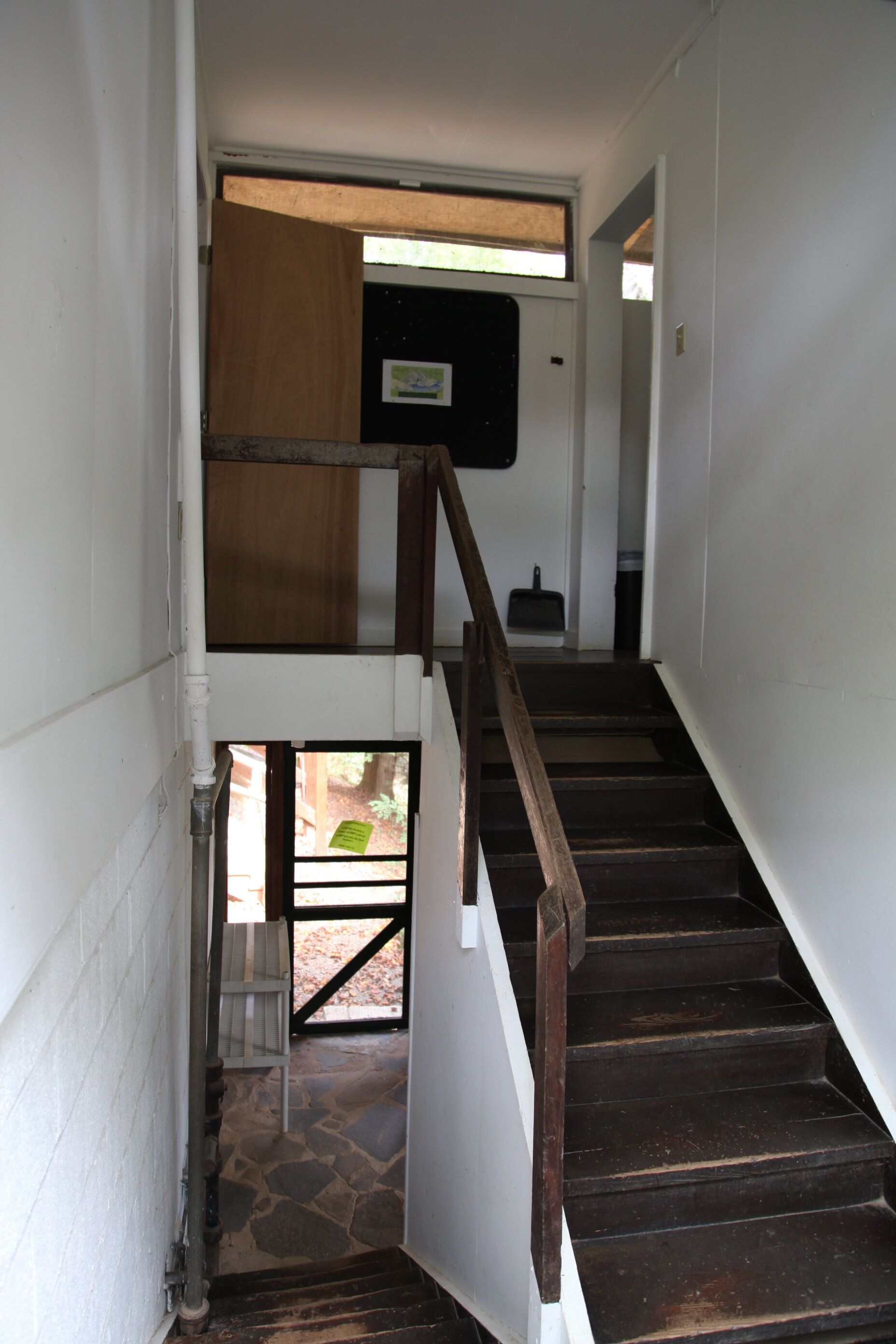1 | Black Mountain College
I was in my 50s the first time I set foot on Black Mountain College’s enchanting Lake Eden campus, in the fall of 2015, while making my first research sojourn to the Western Regional Archives in nearby Asheville to scope out the college’s historical materials and to deliver my first conference paper on Gate Hill founder Paul Williams. The event was the international symposium ReVIEWING Black Mountain College: Bauhaus + USA, hosted by the University of North Carolina, Asheville, and the Black Mountain College Museum and Arts Center.
Determined to spend some intimate time on the old campus, exploring the grounds and buildings that still remain from the College’s heyday, my wife Marilyn and I somehow managed to find lodging in the Sequoia Cottage, one of the campus dwellings now rented out by its current owners who share the property with Camp Rockmount, a Christian summer camp for boys. Curious to know more about the rental, the woman I spoke with over the phone was fairly certain the cottage was the home, for a time, to a former BMC faculty member and his family. It turns out that faculty member was Heinrich Jalowetz, one of the college’s most humble and beloved celebrities and, even more serendipitously, my mother’s mentor and advisor when she was a music student there in the mid 1940s. Patsy remembers those college years studying with her cherished “Jalo” (that’s “Yah-Lo” not “JayLo” folks) and that often meant taking piano lessons in his living room, then doubling as a music classroom.
• Click/tap on any image to enlarge and view photo credits •
• Click arrows or swipe to advance to next image •
All photographs © Mark Davenport (except as noted)
Walking through the front door of the Jalowetz Cottage some 70 years later, and then exploring the terrain, it’s hard to describe my feelings—undeniably in awe of all the remarkable figures I knew had graced the campus during that extraordinary second half of Black Mountain’s short history, and the place seemed to exude their spirit. But there was also a surprising scent of familiarity—the earthiness of the damp leaves, the moist humid air and musty corners, and the Southern Appalachian canopies of green woods. No question the occasion summoned the youthful longings of my childhood at Gate Hill, growing up under the similarly high spreading branches of the Ramapo Mountains, along the northern chain of the Appalachians. Could this have been the attraction for those early founders who chose to settle at the “Land” following their shared experiences at Black Mountain? At that moment in time, I felt certain it was.
My mission for the next morning was to find the “Minimum House,” a small 400-square foot home built over the winter of 1947-48 by a group of BMC students, spearheaded by Paul Williams. I had seen photos of the structure taken decades later by Mary Emma Harris for her seminal study of the arts at Black Mountain but had no idea that the building was demolished in 2007 by the folks at Camp Rockmount. Surveying an area just up from the Jalowetz Cottage, not more than a dozen feet off the gravel road, I noticed a small clearing where I recognized the front of a lone moss-covered rock wall, quietly sentried in the woods. The carefully stacked and mortared rocks were all that remained of the Minimum House, yet the area was still surrounded by rhododendron trees that Vera Williams described to me when she and Paul became its first residents there in the summer of 1948 – that legendary summer with John Cage and Merce Cunningham, and Bucky Fuller’s first attempt at raising his geodesic dome.
Later that morning I hoped to find what might remain of the old Science Building, designed and constructed by Williams in the fall of 1949, with assistance from several interested students (including 21-year-old Stan VanDerBeek). The hunt proved to be considerably more of a challenge as there were now a series of similarly built “cabins” in that area all painted in the same dark woodland brown with forest green trim. Being early fall, the Camp was now emptied of its summertime schoolboy inhabitants, leaving Marilyn and I the opportunity to explore the vacant and unlocked cabins on our own. One cabin seemed to fit the description, although considerably bastardized over the years. Entering one of the small bedrooms with its wall of glass windows, I became more convinced we had found the right structure.
Then, climbing down below the cabin, I noticed the telltale rock wall, cinderblock foundation and tall metal posts supporting the extended main section of the building, all recognizable markings of Williams’s homes at Gate Hilll. But the dead giveaway was the narrow staircases leading up from the main entrance to the second floor—virtually all of the homes at the Land share that minimalist feature—perfectly fashioned for a tall thin man!
Confident we had allowed enough time to let the experience seep in, we moved on to the farm, but not before noticing the old Science Building had been renamed by Lucas, Roman, Cooper, Nicholas, and all the other cabin boys who thought it should be more appropriately baptized “The White House.”
New nameplate for the old Science Building
Continuing our walk-about through a small wooded area and out into an open field, we soon approached the farm, with its iconic red barn and two glazed-tile silos, that appear in so many of the archival photographs of Black Mountain College (I had to make a black and white image just to underscore the point). To the right of the barn one could still make out the old Milk House where one of my mother’s work program duties was to cool the milk there, a chore she shared with Ati Gropius, daughter of the Silver Prince himself.
Before our short drive down to Asheville that afternoon I stopped to snap some shots of another one of the iconic structures at BMC—the Studies Building, barely completed the year before Patsy arrived on campus as a freshman in the summer of ‘42. How many times did she and her friends hang out on the upper deck, framed by its wire-mesh railing. Luckily for us a number of photos still exist that document Patsy and her BMC friends sunning on the deck of the Studies Building, including her former BMC roommate Vera Baker (see photo inset in “Patsy and Vera then and now” below). Neither one could have imagined that less than ten years later they would both be married, raising families together in an experimental artist’s community they founded with other former faculty and students from Black Mountain. For that moment they were simply college classmates each finding their own respective paths.
The short stay at the campus was an experience I’ll never forget. Temporarily satiated but yearning to know more, I spent the next several days sifting through the many golden BMC nuggets housed at the Western Regional Archives in Asheville, where I was absolutely astonished at what I found. But that, as they say, is another story!















